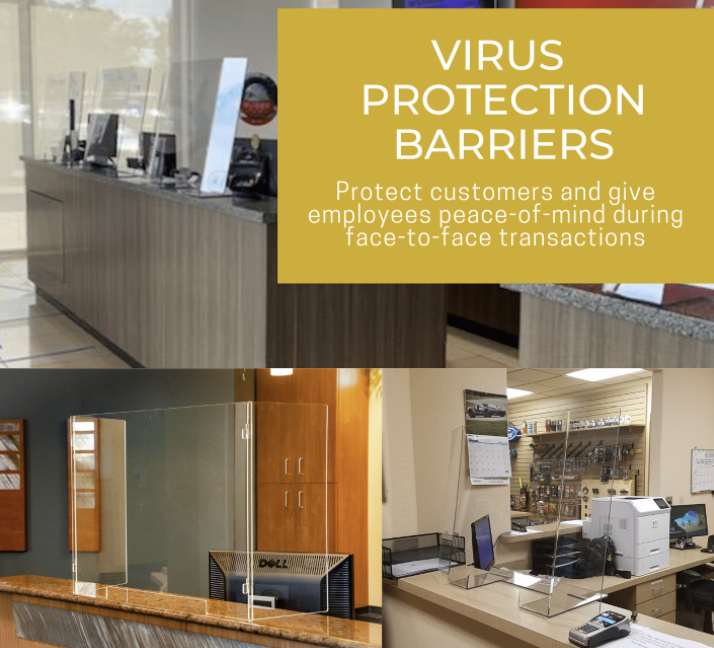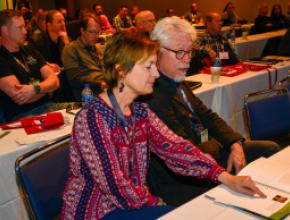Cabinet shops were encouraged to look at their process in a new way during two special online presentations of Wood Pro Expo May 19, “Inside a real cabinet shop’s lean journey,” and “Diversifying Your Business: Think Outside the (Cabinet) Box.”
The majority of presentations originally scheduled for the now-canceled June 10-12 Cabinets & Closets Conference & Expo and Wood Pro Expo Texas are being offered live online on May 19-20 in separate four-hour sessions.
In the first session, Inside a real cabinet shop’s lean journey, Dustin Hunter, CEO of Hunter Trim & Cabinets., Fort Worth, Texas, was interviewed by Will Sampson, editor of FDMC Magazine.
Hunter has worked in cabinet shops since he was in high school. His company has had steady growth in recent years, with 30 employees, and a shop size of about 13,000 square feet and annual sales of $4 million. Most business is in residential cabinets, and the company also does interior trim and woodwork.
Hunter got interested in lean manufacturing by reading articles in FDMC by Jim Lewis.
“We had a lot of work but were struggling to get all this work out on time,” Hunter said.
Lewis responded to an email from Hunter, and visited the cabinet shop two weeks later.
“The cost of hiring a consultant one week a month for six months, (meant that) we couldn’t fail,” Hunter said. “What we got out of it was so much more.”
Hunter was relentless in his pursuit of lean on a daily basis, and the employees saw that, even though it was difficult to get buy-in from employees at first.
Lewis’s involvement was critical to the success of the company’s lean effort.
“It’s very important in the early days to get that outside help and get on the right path,” Hunter said.
Hunter Trim & Cabinets used to make cabinets in large batches, making all doors at once, and assembling and finishing them. Using lean techniques, they went to making one cabinet at a time. This boosted output. They started counting boxes made, and went from doing 15 boxes a day to 30, and have since been making more.
Hunter also created a new floor layout, shifting all functions around to make the flow better, and added some equipment but not a lot of new machines. They didn’t buy a CNC machine until they had been doing lean for several years.
“It’s not about machinery, it’s about continuous improvement and getting people to see the waste.”
Also, everything is labeled and in its right place, down to the smallest hand tool. Hunter said this has a huge impact on the daily workflow.
“Our job is to make (everyone’s) job easier,” he said.
Lean also affected the office organization, including the engineering department, creating a new system they had to implement. “Everything is a process, sales, engineering,” he said. “Everything can be improved.”
Hunter read the Paul Akers book, 2 Second Lean, and he started a meeting every morning to focus on improvement. They spent 45 minutes a day to fix a problem from the previous day. They quickly made up the production from the time spent in the daily improvement meeting. Hunter also encouraged employees to make videos of what had been improved.
This year, the goal is to achieve 15 percent increase in sales and production. “We track things and keep metrics on things, like a baseball team. We look at the numbers so we can validate the improvement.”
It’s simple, but it’s not easy, he said.
Embracing diversification
The second session, Diversifying Your Business: Think Outside the (Cabinet) Box, was put on by the Cabinet Makers Association, with a panel of Amanda Conger, CMA executive director, and CMA members Chris Valenti and Matt Wehner.
Wehner’s company, Cabinet Concepts by Design, has 39 employees in 30,000 square feet in Springfield, Missouri. He and his wife bought a cabinet shop in late 2007, just before the start of the recession.
The company started with small 5,000 square feet shop, and bought another larger shop that went out of business in 2009. They were producing closets with a CNC router and edgebander and saw an opportunity in that market. The company embraced closet manufacturing, even setting up a separate operation for closets.
Wehner saw bottlenecks in making doors and finishing. And he saw how closets were being produced efficiently in a tour of another company. “I would give up custom cabinetry for custom closets any day,” he said.
“We have a showroom, and another small room that has closets set up with LED lighting, a nice add-on when customers come in for their kitchen and bath cabinets.”
Wehner said it has not been hard to market the closet capabilities. Closets are more forgiving than kitchen cabinets when encountering space variations or floors out of level.
Regarding Covid-19, they are operating as an essential business supporting the homebuilding industry. “We disinfected twice a day, and we have a low infection rate in Springfield.” They are also working with designers online and remote meetings.

Plastic fabrication
For Chris Valenti, diversification was into different materials. CK Valenti Designs in Chandler, Arizona, started in 2005 in a garage, focusing on wood and metal fabrication. Valenti moved into a 4,000 square foot industrial condo, opening in 2008 just before the financial crisis hit, and today employs five people.
Valenti made it through the recession by making trade show displays and custom briefcases. “It was painful in 2008-09 but it allowed us to pay the bills,” he said.
Then the company won a bid for doing displays for a new museum, a longer-term project. He bought a used CNC router, and the company could do wood, metal and plastic fabrication. The commercial market is now the main focus for the company.
Recently, they started making plastic barriers for virus protection. This work has helped the company keep busy and have revenue coming in. Their past plastic experience helped in doing this work. Valenti sees these barriers becoming more common in offices and areas of public interaction. Valenti said they had the equipment and the knowledge to make plastic barriers.
“The shop has to be optimized when you are working with different materials,” he said. “Everything is on wheels, (and we) show woodworkers how to work with metals and plastics.”
Valenti also worked with the Etsy site to sell a one-piece plastic protection barrier, spurring sales by offering free shipping. He said shops have to focus on sales, not just on the craft side of the business.
There will be four more sessions on May 20 from 10 a.m. to 2 p.m. CDT: Barry Moltz Workshop -- How to Bounce Back: Failure, Resiliency and the Confidence For Your Next Success; Garage Organization with Shaun Oriold, Closet Envy; Design Hacks – Award winning designers Patty Miller and Wendy Scott from Boutique Closets & Cabinetry, New Jersey; and Kenn Busch, Climate Positive Now, How to tell the world's greatest materials sustainability story.







Have something to say? Share your thoughts with us in the comments below.